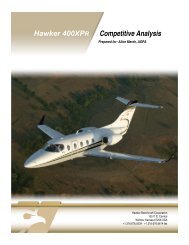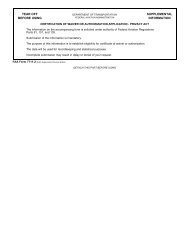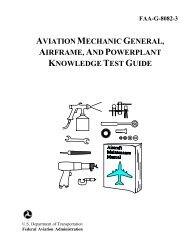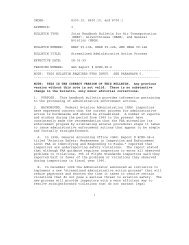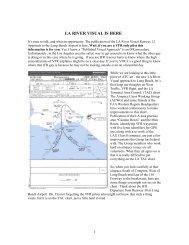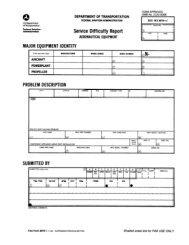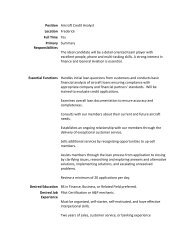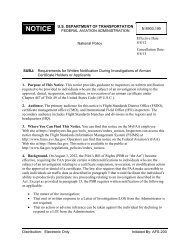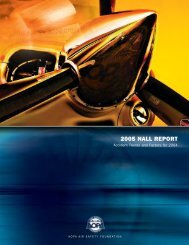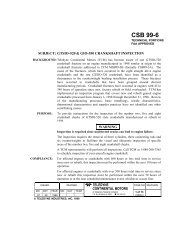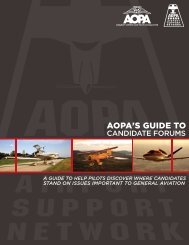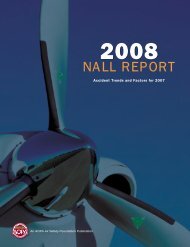Student Worksheet
Student Worksheet
Student Worksheet
You also want an ePaper? Increase the reach of your titles
YUMPU automatically turns print PDFs into web optimized ePapers that Google loves.
Module 9: How do pilots know where to land?<br />
STUDENT<br />
ACTIVITY: Runways and Wind<br />
RUNWAYS ARE IDENTIFIED BY THEIR NEAREST COMPASS HEADING<br />
(OMITTING THE LAST ZERO OF THAT HEADING.)<br />
Since runways have two ends, the opposite end of the runway has the opposite (reciprocal)<br />
compass heading.<br />
A<br />
B<br />
C<br />
14<br />
What is the approximate magnetic compass heading of runway… A __ __ __ B __ __ __ C__ __ __ ?<br />
What is the runway number at the opposite end of runway… A __ __ B __ __ C __ __ ?<br />
Airplanes land or take-off best on a runway (most closely) aligned into the wind. Wind is reported by the<br />
compass direction it’s blowing from and its speed. The third digit of the compass heading is omitted.<br />
Example: For wind from 270, Runway 27 would be best.<br />
CHOOSE THE BEST AVAILABLE RUNWAY FOR THESE WINDS<br />
Circle the runway you should use. (Both runway ends are shown.)<br />
WIND<br />
Which end of the runway?<br />
225 degrees or SW Runway 4/22<br />
From the south 180 Runway 17/35<br />
200 degees or SW Runway 9/27<br />
150 degrees or SE Runway 14/32<br />
14<br />
14<br />
60 degrees or NE Runway 13/31<br />
For <strong>Student</strong>s
Module 9: How do pilots know where to land?<br />
STUDENT<br />
ACTIVITY: Traffic Patterns<br />
Direction of wind<br />
In the example above, airport traffic moves around the landing runway in a rectangular traffic pattern<br />
making left turns, under standard procedures.<br />
The sides (legs) of this rectangular pattern are named in relation to the wind blowing down the landing<br />
runway, except for the BASE leg (heading back to “the base”) and the FINAL leg.<br />
CIRCLE ONE OR FILL IN THE BLANKS:<br />
1. You’re entering the airport area in same direction as the runway that is most aligned into the wind.<br />
You’ll fly the DOWNWIND / UPWIND leg first.<br />
2. After you fly along the landing runway, you’ll pass the far end of the runway and turn left onto<br />
the __ __ __ __ __ W I N D leg.<br />
3. To fly along the runway back towards the landing end, you’ll turn left again. With the wind on your tail,<br />
you’re on the __ __ __ __ W I N D leg.<br />
4. After passing the end of the landing runway, you’ll turn left toward the final approach course.<br />
This is the __ __ __ __ leg.<br />
5. Finally, you’re flying straight towards the runway “on __ __ __ __ __.”<br />
For <strong>Student</strong>s



